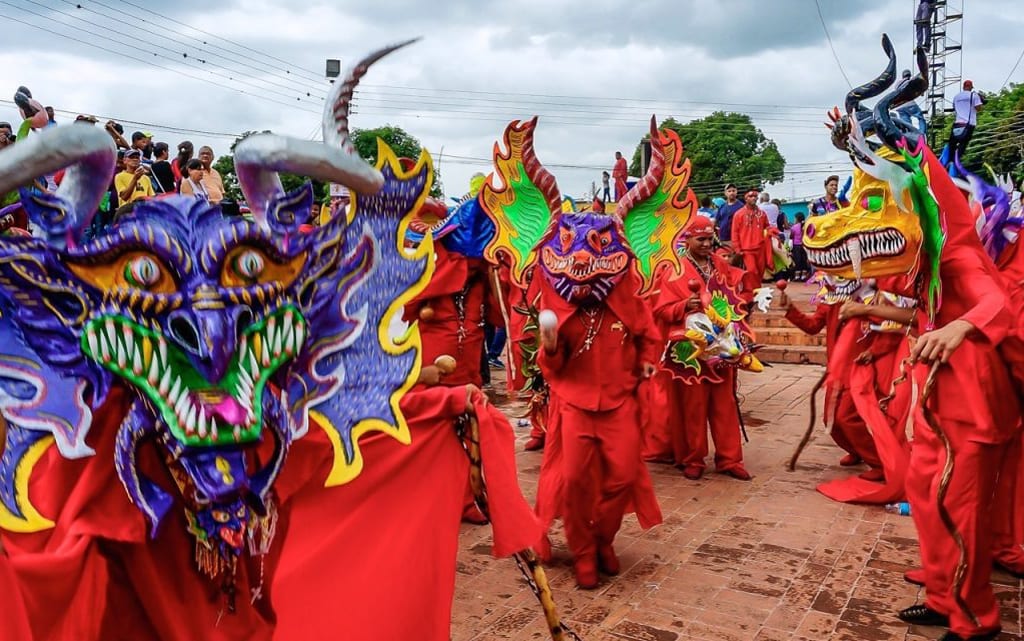Venezuela is a country located in South America, famous mainly for its beautiful sites, among which stand out the Angel Falls, Colonia Tovar and Lake Maracaibo. Hundreds of tourists also come to this territory to get to know and enjoy the long miles of Venezuela’s crystal clear beaches, the Morrocoy National Park, the beautiful Venezuelan cities, its good weather all year round, its incredible oil wealth and its outstanding participation in beauty contests. But do you know the Venezuelan culture?
Well, today, we are going to talk about the Venezuelan culture, which will allow you to have a better idea of the customs and traditions of this country, although we must also say that in some aspects it keeps similarities with other Latin American cultures. Want to know more about Venezuelan cultural diversity? Read on!
The Dancing Devils of Yare
On Corpus Christi day, the Dancing Devils of Yare are celebrated, a religious festival that dates back to the 18th century. Its purpose is to worship the Blessed Sacrament of the Altar and celebrate the triumph of good over evil. This dance has African influences and, although it is performed in several regions of the country, the greatest demonstration of this Venezuelan cultural festival takes place in San Francisco de Yare, in the state of Miranda.
What does it consist of? Well, the devils go through the streets, wearing red clothes and masks, dancing to the sound of four main steps: the corrío, escobillao, reposo and bamba. They stop several times in front of different altars, until they arrive at the church, because they are in the presence of Jesus. They let the mask hang on the ground as a sign of surrender and inability to defeat him. This festival was designated as an intangible cultural heritage of humanity by UNESCO in 2012.
Christmas Customs
In Venezuelan popular culture, there are several customs that are carried out to welcome the new year. In Venezuelan homes, it is customary to eat 12 grapes to the sound of wind chimes, the purpose is to make a wish for each grape consumed. Another ritual is to climb on a chair to obtain a partner for the coming year.
Venezuelans have the habit of crossing certain streets with their suitcases, according to the belief that the longer the journey, the more likely it is to be lasting. For abundance, there are two rituals: the first is to wear yellow underwear and the second is to carry rice in your pockets.
The Parranda de San Pedro
Every June 29, this festival is celebrated, which has its origins in the colonial era. The Parranda de San Pedro is celebrated in the towns of Guatire and Guarenas in the state of Miranda. It all began when a woman, seeing that her daughter was not cured of a high fever, asked San Pedro to intercede for her daughter’s recovery. In exchange, she went out into the streets to dance and sing every June 29.
Her daughter was healed and the woman kept her promise. Over the years, people gathered and the Parranda de San Pedro was born. Today, this festival is part of Venezuelan culture, especially in the above-mentioned cities of Venezuela. It is common to see parranderos dressed in levitá and pumpá, women with dresses and hats abundantly decorated with flowers, as well as children with yellow and red costumes. This festival was declared intangible cultural heritage of humanity by UNESCO in 2013.
Birthday Song
The song “Ay, qué noche tan preciosa” or better known as “Cumpleaños Feliz” is part of the general culture of Venezuela. All the inhabitants of this country know it and sing it on the day they celebrate their birth. This song is different from other countries because it is usually much longer and is sung with a lot of fanfare.
This Venezuelan cultural song was created by guitarist Luis Cruz in the 1960s. Over time, additional verses have been added that do not change the original lyrics, but add a humorous tone.
There you are! You now know more about this rich culture. Do you want to learn more? Come back to check the second part of our article. Until then, when are you planning to visit Venezuela? Let us know in the comments below.

Leave a Reply
You must be logged in to post a comment.